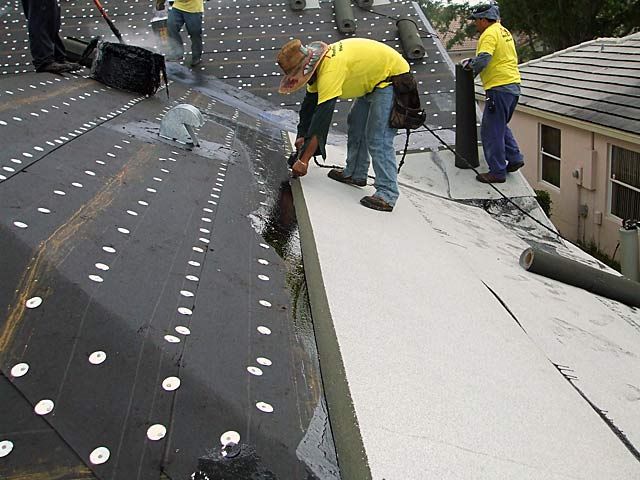In the context of roofing, numerous homeowners often concentrate on the aesthetic qualities and the types of materials, but one crucial aspect is often overlooked: proper ventilation. Residential roofing Nebraska plays a major role in prolonging the life of your structure and making sure that it functions efficiently throughout the seasons. Poor ventilation can lead to a host of problems, including humidity issues, increased energy costs, and a shortened lifespan for roofing materials. Grasping the value of proper attic ventilation can help you make knowledgeable decisions regarding installing a roof and maintenance.
When you begin your roofing project, whether it's a complete replacement or simple repairs, understanding the appropriate moment it's time for a new roofing is essential. Homeowners should get to know with the indicators that show that their roof may be coming to the end of its lifespan. Factors like roofing type, common issues, and weather patterns can all influence how long your roof holds up. In addition, ensuring that your roof has proper ventilation can stop many of the most common problems that arise over time, maintaining your home safe and pleasant. In this article, we will explore the key role of ventilation in roofing and how it can greatly affect your roof's lifespan and overall effectiveness.
Grasping Roof Lifespan and Replacement
The service life of a roof is determined by various variables, including the components used, the weather conditions in which a home is situated, and the extent of maintenance it experiences. Different roofing materials have distinct lifespans; for instance, asphalt shingles generally last 15 to 30 years, while metal roofing can last for 40 years or more. Homeowners should regularly be cognizant of the specific lifespan linked to their roofing materials to plan for eventual reinstallation or the need for repairs.
Identifying when it’s time for a replacement roof can avert more major problems down the line. There are various signs that indicate a roof renewal may be necessary, like widespread shingle damage, sagging sections, and clear leaks inside the home. Regular inspections are vital for identifying these issues in advance, ensuring that homeowners can address them before they escalate into costly fixes or physical damage.
When considering roof renewal, grasping the options available is essential. The process involves selecting the right materials fitting the home’s style and location, as well as determining whether to select a roof tear-off or a simple overlay. Each choice affects the overall cost and longevity of the new roof, making it crucial for homeowners to conduct thorough investigation or consult with roofing experts before reaching a decision.

Frequent Roofing System Issues and Resolutions
One of the most frequent problems homeowners encounter is roof leaks. These can occur from multiple reasons such as damaged shingles, inadequate sealing around vents, or deterioration over time. To address leaks, it's crucial to find the source, which can often be accomplished by inspecting the attic for evidence of moisture. For slight leaks, homeowners can make an effort to seal the area with roof cement or sealant, but significant leaks may necessitate qualified repair to ensure a long-lasting resolution.
Another typical problem is the issue of lost or worn shingles. This often happens due to extreme weather conditions or worn-out materials. Homeowners can easily swap individual shingles, provided they have spares on hand, but should perform regular checks to identify these issues early before they lead to more significant problems like water damage or construction damage. In situations of extensive shingle damage, a full roof replacement may be required.
In conclusion, inadequate attic ventilation can lead to excessive heat and moisture concerns, ultimately undermining the roof's strength. Homeowners should ensure that their attic has plentiful ventilation to facilitate the proper flow of air. Adding ridge vents, soffit vents, or powered ventilators can help preserve a balanced airflow. Regularly monitoring for signs of excessive heat or moisture can help tackling ventilation-related problems before they escalate into expensive repairs.
Significance of Adequate Ventilation in Roof Structures
Adequate airflow is essential for maintaining the well-being and lifespan of a roof structure. It allows for the unrestricted flow of air throughout the attic space, regulating temperature and moisture levels. Without sufficient airflow, heat can build up and lead to elevated temperatures in the attic, which can compromise insulation and lead to higher energy costs. Furthermore, moisture accumulation can result in mold growth and wood rot, significantly weakening the structural integrity of the roof.
In addition to preventing damage, adequate airflow helps to prolong the lifespan of roofing materials. Different materials have diverse levels of vulnerability to temperature and moisture fluctuations. For instance, asphalt shingles can prematurely deteriorate if trapped heat causes them to overheat. By ensuring her explanation , homeowners can minimize the risk of premature replacement and maintain the aesthetic appeal of their roofs for a longer period.
In summary, installing proper ventilation systems, such as ridge vents and soffit vents, is a critical aspect of roof installation and maintenance. Homeowners should prioritize adequate ventilation not only to prevent long-term damage but also to improve energy efficiency. Regular roof inspections should also include evaluations on ventilation systems to ensure they are functioning correctly, thereby protecting the home investment.
